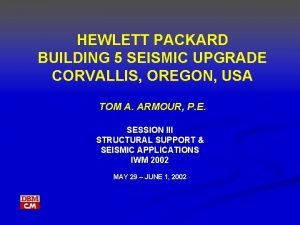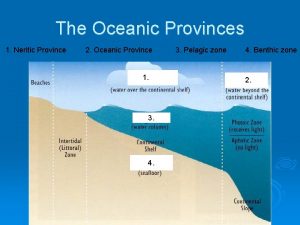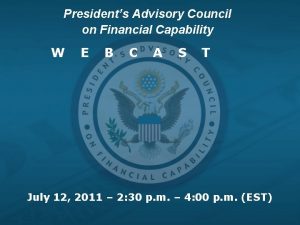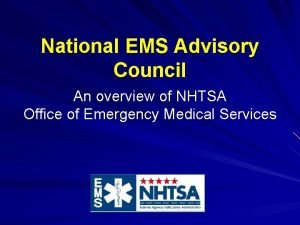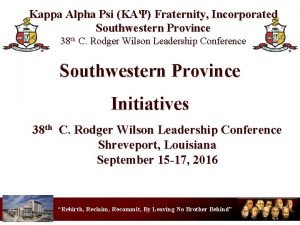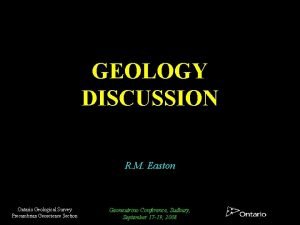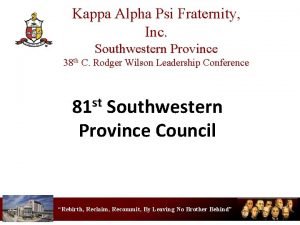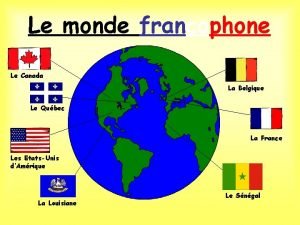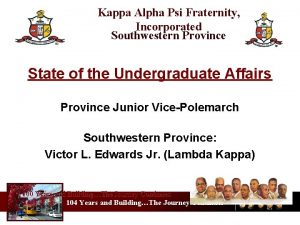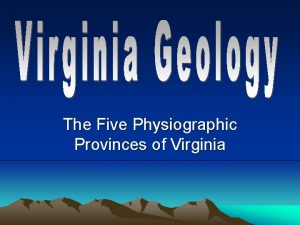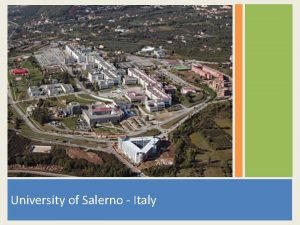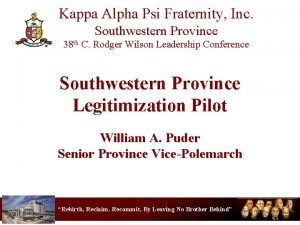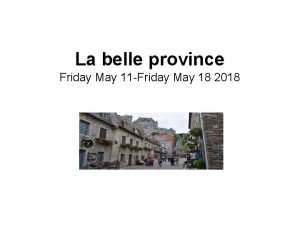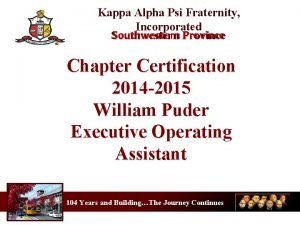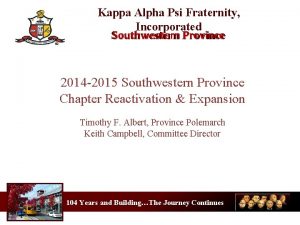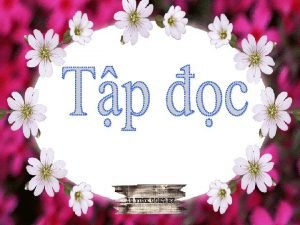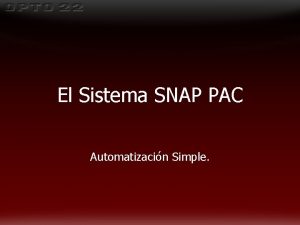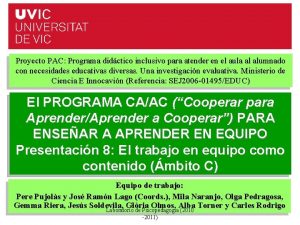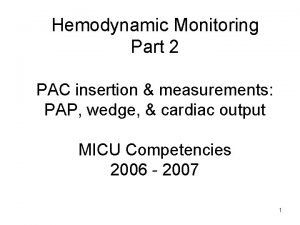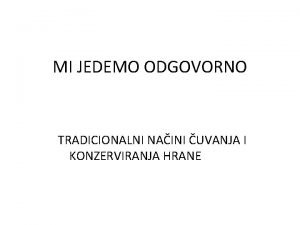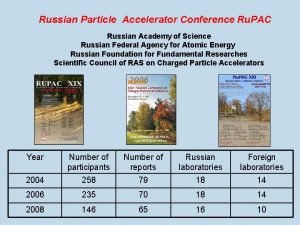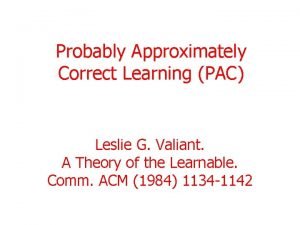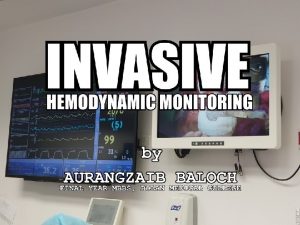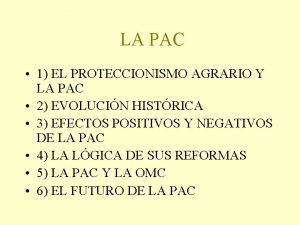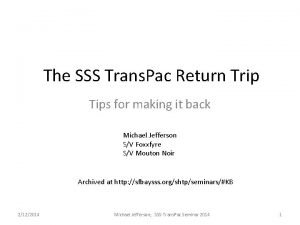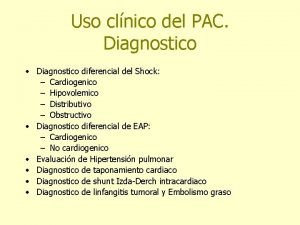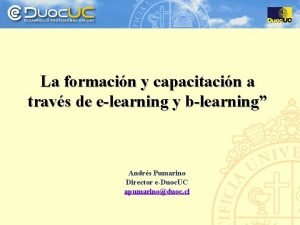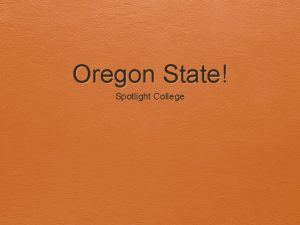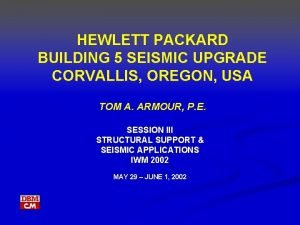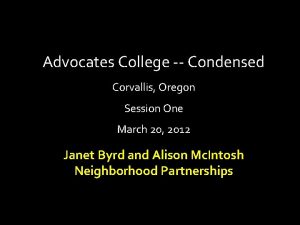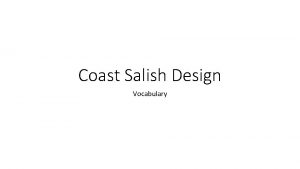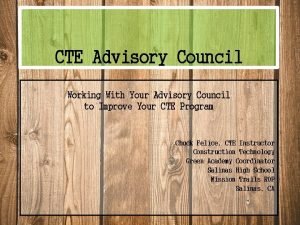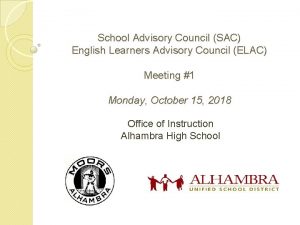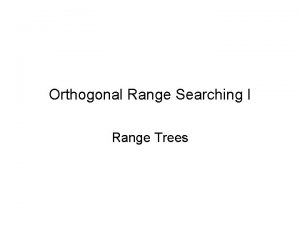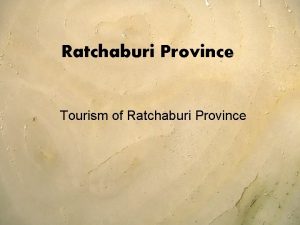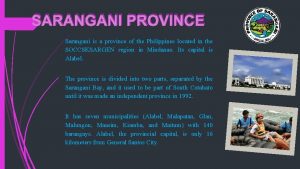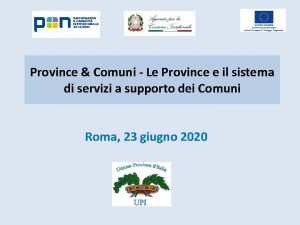Oregon Coast Range PAC Province Advisory Council Corvallis











































![“Indian Trail [from Willamette Valley] to Tidewater” “Alseya Valley” General Land Office survey map, “Indian Trail [from Willamette Valley] to Tidewater” “Alseya Valley” General Land Office survey map,](https://slidetodoc.com/presentation_image_h/02fbad8459700eaaffc9587d0ac16ed0/image-44.jpg)





















- Slides: 65

Oregon Coast Range PAC (Province Advisory Council) Corvallis, OR, April 15, 2004 10: 30 AM Bob Zybach Forest Fire History & Land Use Ecologist: Five Rivers Land Management Study OSU Forest Sciences Dept. /PNW Research Station

Hypothesis Current evidence suggests patterns of late-15 th to mid-19 th century Indian burning practices had a direct effect on subsequent patterns of Oregon Coast Range catastrophic forest fires that occurred from 1849 to 1951. In particular, Indian fires may have influenced the cause, timing, severity, location, and boundaries of subsequent wildfires.

Sources of Information

Historical Drawings & Photographs

Literature Review

Living Memory and Oral Traditions

Aerial Photographs

Historical Maps

GIS C O N V E R S I O N 1895 -96 USGS Coos Bay 30 min Quadrangle Map • • Bottomland Prairies 1868 Coos Fire • 1770 Millicoma Fire • Wagon Roads and Trails

Persistent Vegetation Patterns


Oregon Coast Range Named Rivers Elevations

Oregon Coast Range Fuels *Spruce/hemlock *Douglas-fir *Oak grasslands






Coast Range Seasonal Fuel Desiccation, 1961 -1991 • • • Killing Frosts North (Nov. 3 -Mar. 3) East (Nov. 2 -Apr. 14) West (Nov. 8 -Apr. 6) South (Nov. 10 -Apr. 5) • • • Summer Droughts North (May-Sep. ) East (Apr. -Oct. ) West (May-Sep. ) South (Apr. -Oct. )







Types of Indian Burning Practices





OREGON COAST RANGE Seasonal Burning Patterns, ca. 1600 -1848

Willamette Valley, Oregon 1845 1885


Soap Creek Valley, Oregon 1914 1989


The Great Fires § Millicoma, ca. 1775 § Yaquina, ca. 1849 § Nestucca, ca. 1853 § Coos, 1868 § Tillamook, 1933







![Indian Trail from Willamette Valley to Tidewater Alseya Valley General Land Office survey map “Indian Trail [from Willamette Valley] to Tidewater” “Alseya Valley” General Land Office survey map,](https://slidetodoc.com/presentation_image_h/02fbad8459700eaaffc9587d0ac16ed0/image-44.jpg)
“Indian Trail [from Willamette Valley] to Tidewater” “Alseya Valley” General Land Office survey map, 1856



Alsea Valley North Fork Prairie Trail Network, 1775 -2003










Comparison of Oregon Coast Range Indian Burning & Catastrophic Forest Fire Patterns



The Future

Proposal Spatial and temporal landscape patterns of Indian-type burning and land use should be reintroduced into the Oregon Coast Range (at least on an experimental basis) at a subbasin or greater scale.

Federal & State Forest Land Ownership Oregon Coast Range 2004

CULTURAL LANDSCAPE PATTERNS OF THE OREGON COAST RANGE ca. 1650 to 1826

Rationale 1) Protection of human communities, transportation systems, and other developments from wildfire and unmanaged smoke; 2) Stable and maintained habitats favorable to native plants and animals, including esthetic, game, and ESA-listed species; 3) Stable, efficient, and protected environment for the sustainable growth of timber, food, and grass crops; 4) New vegetation patterns and trained local work crews will result in more efficient and effective wildfire management strategies; 5) Implementation of this proposal would result in year-around work opportunities and improved economies in rural communities; Others: Respect for past cultures; new business opportunities; increased income to schools and roads; increased recreational and community event opportunities, esthetics.

 Hp corvallis oregon
Hp corvallis oregon Pelagic province
Pelagic province Oregon broadband advisory council
Oregon broadband advisory council Illinois broadband advisory council
Illinois broadband advisory council Source selection advisory council
Source selection advisory council German advisory council on global change
German advisory council on global change President's advisory council on financial capability
President's advisory council on financial capability It-aac
It-aac National ems advisory council
National ems advisory council Cadet advisory council
Cadet advisory council As compared to long-range forecasts, short-range forecasts
As compared to long-range forecasts, short-range forecasts Ridge and valley province
Ridge and valley province Southwestern province kappa alpha psi
Southwestern province kappa alpha psi Grenville province geology
Grenville province geology Kappa alpha psi southwestern province
Kappa alpha psi southwestern province Province belgique
Province belgique Southwest province kappa psi
Southwest province kappa psi Province del veneto
Province del veneto Bali province
Bali province 5 physiographic provinces of virginia
5 physiographic provinces of virginia University of salerno italy
University of salerno italy Kappa alpha psi southwestern province
Kappa alpha psi southwestern province Opole province excursions
Opole province excursions William puder kappa alpha psi
William puder kappa alpha psi Southwestern province kappa alpha psi
Southwestern province kappa alpha psi Pac beau
Pac beau Hình ảnh chế độ a pác thai
Hình ảnh chế độ a pác thai Chest rolls for prone position
Chest rolls for prone position Pac 512 controller
Pac 512 controller Pac simple
Pac simple Stanley pac reader
Stanley pac reader Pac
Pac Mikrogratyfikant lista płac
Mikrogratyfikant lista płac Pac 500
Pac 500 Machine learning t mitchell
Machine learning t mitchell 2 pac changes
2 pac changes Pacs medical abbreviation
Pacs medical abbreviation Pcwp waveform
Pcwp waveform Pac west insurance
Pac west insurance Lin win ru
Lin win ru Swan-ganz catheter normal values
Swan-ganz catheter normal values Pac concept
Pac concept Kvarenje mesa u pacu
Kvarenje mesa u pacu Precision pac
Precision pac Pac chart programming
Pac chart programming 2 pac
2 pac Leslie g valiant
Leslie g valiant Medpacs tele
Medpacs tele Pac pulmonary artery catheter
Pac pulmonary artery catheter Wingraf
Wingraf đền pác tê nông
đền pác tê nông Stanley pac fob programming
Stanley pac fob programming Pac-1
Pac-1 Stanley pac software manual
Stanley pac software manual Pac diagnostico
Pac diagnostico Pac homme machine
Pac homme machine Ventricular escape rhythm
Ventricular escape rhythm Lvh criteria
Lvh criteria Pac homme machine
Pac homme machine Aldrete score
Aldrete score Ie pac
Ie pac Curso pac duoc
Curso pac duoc Elder pac
Elder pac Vital pac
Vital pac Chirurgie cardiaque bichat
Chirurgie cardiaque bichat Pac learning model in machine learning
Pac learning model in machine learning
